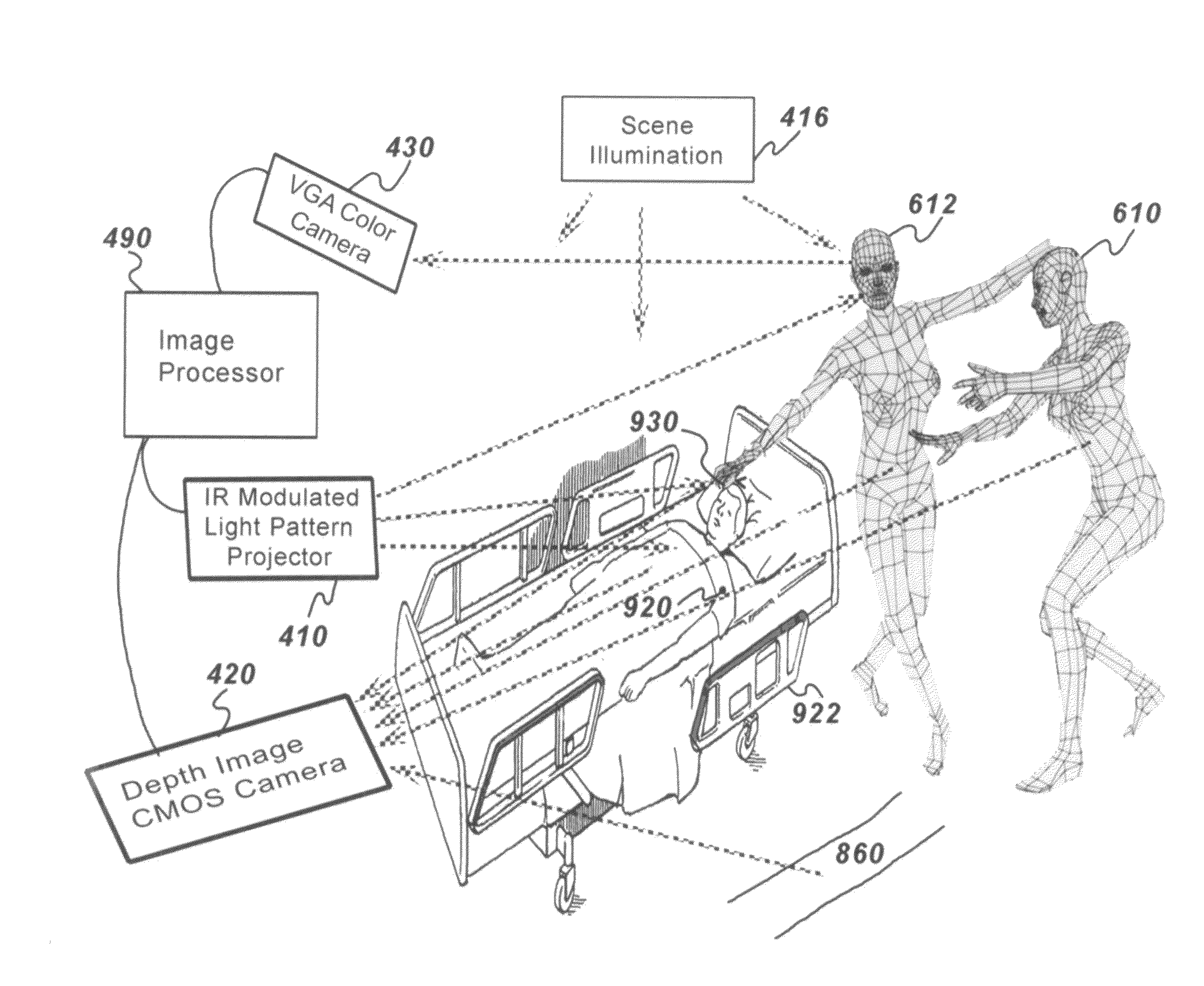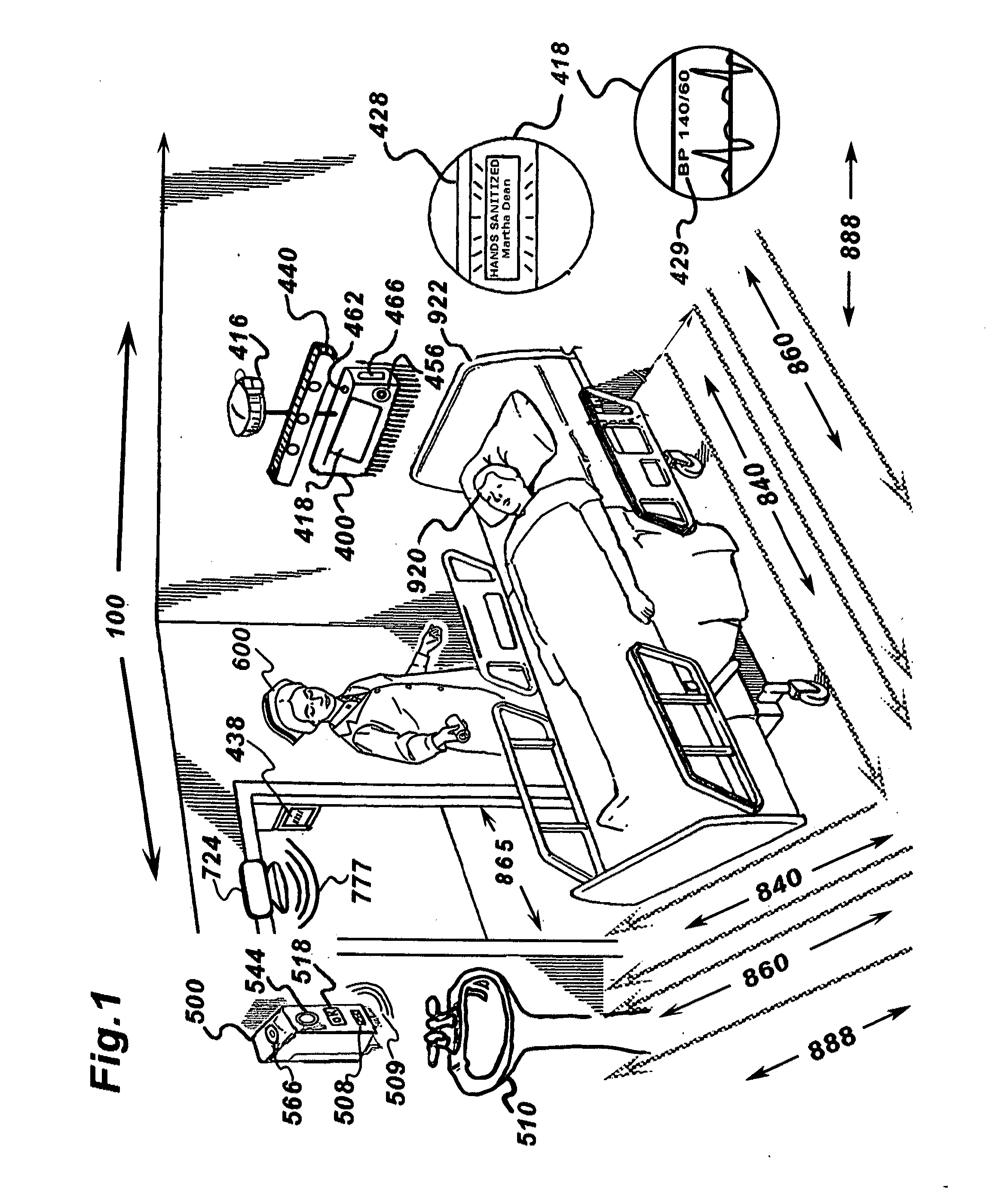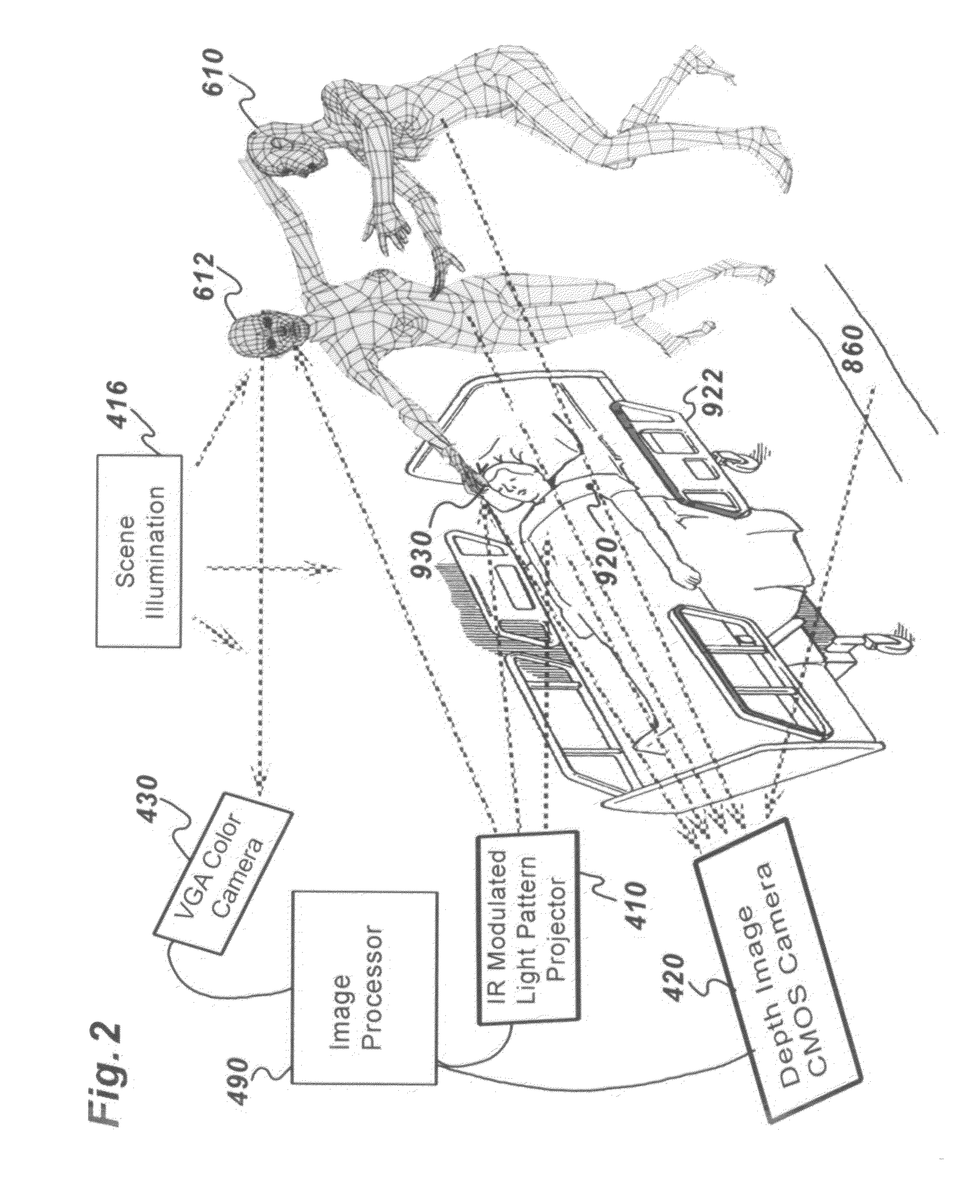Systems and methods for monitoring caregiver and patient protocol compliance
a caregiver and patient protocol technology, applied in the field of systems and methods for monitoring caregiver and patient protocol compliance, can solve the problems of inability inability to use radio waves, and inability to provide a means to address the issue of identification
- Summary
- Abstract
- Description
- Claims
- Application Information
AI Technical Summary
Benefits of technology
Problems solved by technology
Method used
Image
Examples
example 1
[0077]In a first situation, a health care worker with a wearable monitor 220 enters a room and is detected by the three dimensional imaging assembly 400 associated with the primary controller 460. In this example, the system detection area 888 surrounding the patient's is considered contaminated. The worker will be considered “contaminated” when he enters (or leaves) the contaminated area and the cross contamination contact 460 accordingly generates a low power signal to the wearable monitor 220 and / or portable monitor / sanitizer 250 if a portable sanitizer / monitor is used instead of a monitor. This signal causes the monitor to set to Logic #0. (It will be appreciated that the monitor will be already have been set to Logic #0 by station ID clearing signal 777 if the worker has previously been detected entering the patients room from any contaminated area without washing his hands or if too much time has elapsed since the previous hand washing.) The worker may proceed to perform dutie...
example 2
[0078]In a second situation, a health care worker enters a patient's room and then uses the fixed base sanitizer 500 operatively associated with patient and preferably located within patient control area 860 in accordance with required hygienic protocol. The health care worker is detected by the patient care area three 840 by three dimensional imaging assembly 400 operatively associated with primary controller 460 in patient control area 860. An augmented reality Avatar with an associated image value representing the HCW is generated. The sanitizer's activation causes the generation of a signal 266 that causes the worker's monitor to reset to Logic #1 from Logic #0 and the monitor and / or sanitizer display 218 and annunciator 418 associated with primary controller 460 to show a message indicating hand washing compliance while changing the logic level associated with the Avatar to logic #1. The annunciator 418 associated with the primary controller 460 is caused to generate a message ...
example 3
[0079]In a third situation, a health care worker enters a system detection area 888 and a hand washing reminder message is displayed by the primary controller following detection in the patient care area by three dimensional protocol monitoring system 100. The worker, in this case, has washed his hands using the fixed base sanitizer 500 associated with the patient and / or room, but has allowed too much time to elapse since such washing. The annunciator 418 on the three dimensional imaging assembly 400 is accordingly caused to illuminate or flash to signify that excessive time has elapsed, and the monitor status changes from Logic #1 to Logic #0. The worker then proceeds to near proximity of the patient, i.e. within arm's length of the patient or their patient's support apparatus, and such proximity is detected by three dimension image processor 490. This causes the primary controller 460 to transmit a signal. Upon receipt of this signal a caution message is displayed on one or more o...
PUM
 Login to View More
Login to View More Abstract
Description
Claims
Application Information
 Login to View More
Login to View More - R&D
- Intellectual Property
- Life Sciences
- Materials
- Tech Scout
- Unparalleled Data Quality
- Higher Quality Content
- 60% Fewer Hallucinations
Browse by: Latest US Patents, China's latest patents, Technical Efficacy Thesaurus, Application Domain, Technology Topic, Popular Technical Reports.
© 2025 PatSnap. All rights reserved.Legal|Privacy policy|Modern Slavery Act Transparency Statement|Sitemap|About US| Contact US: help@patsnap.com



